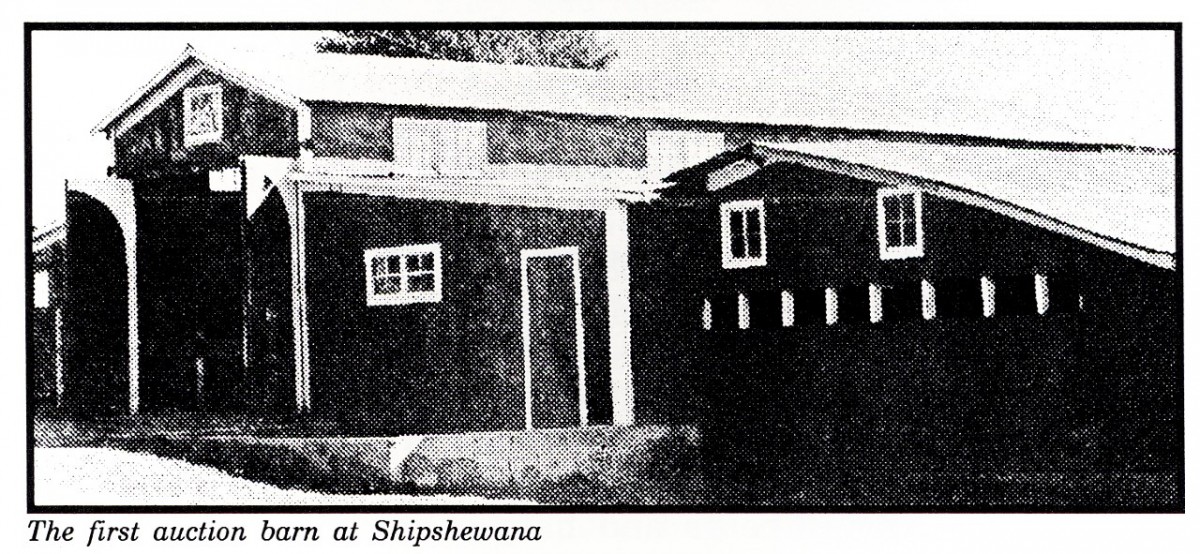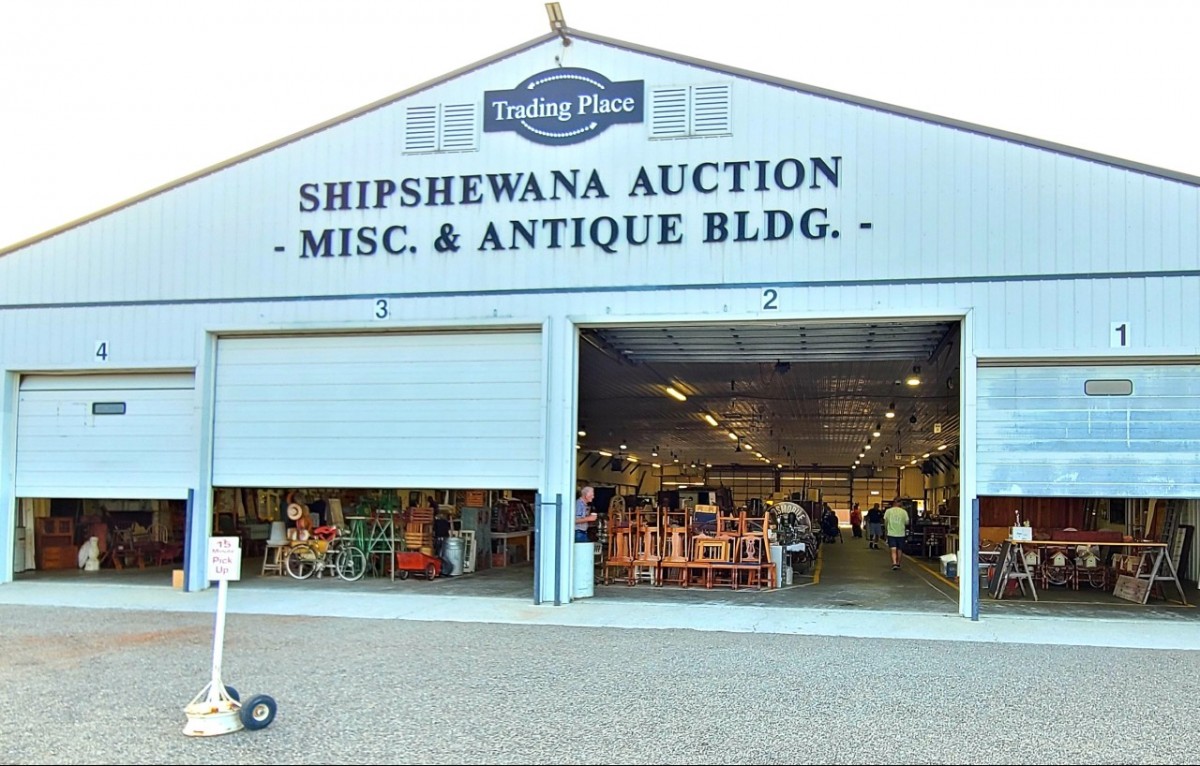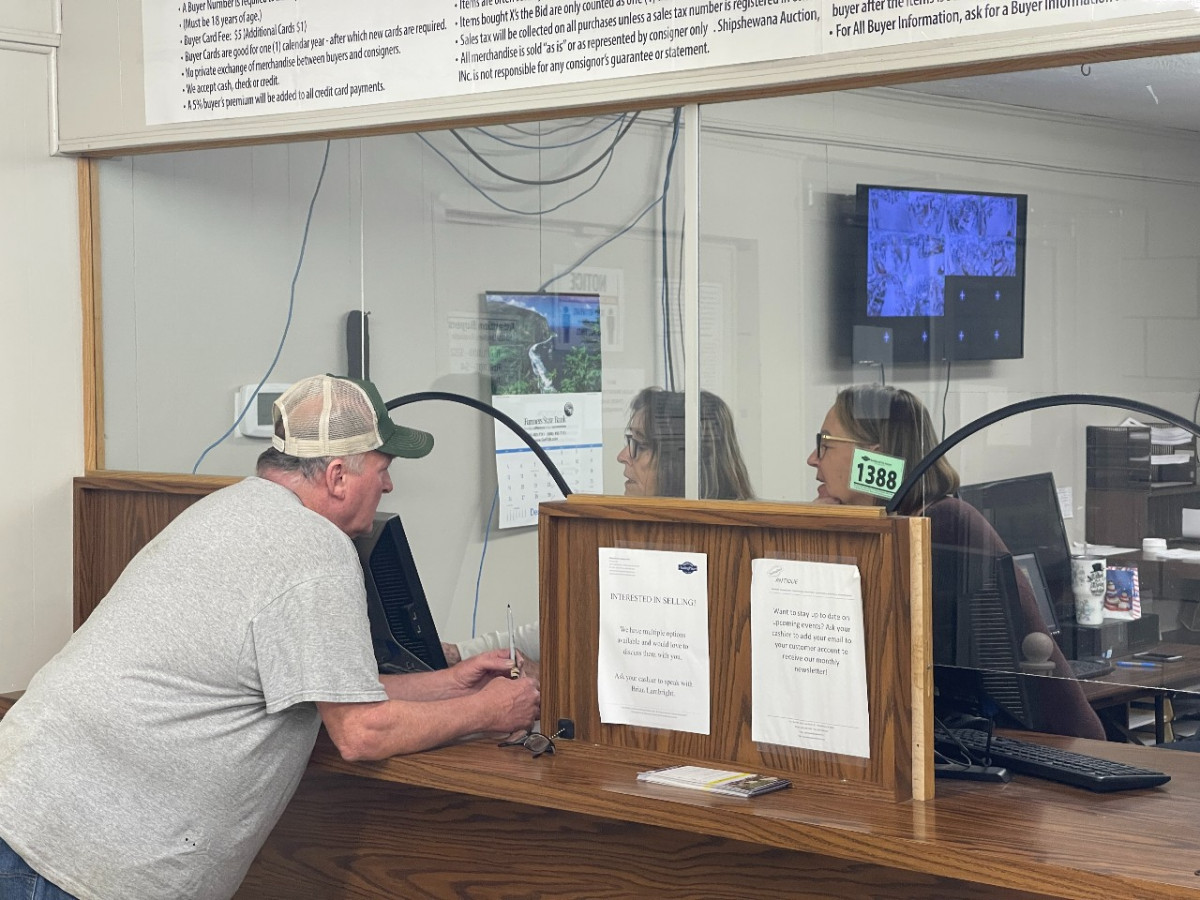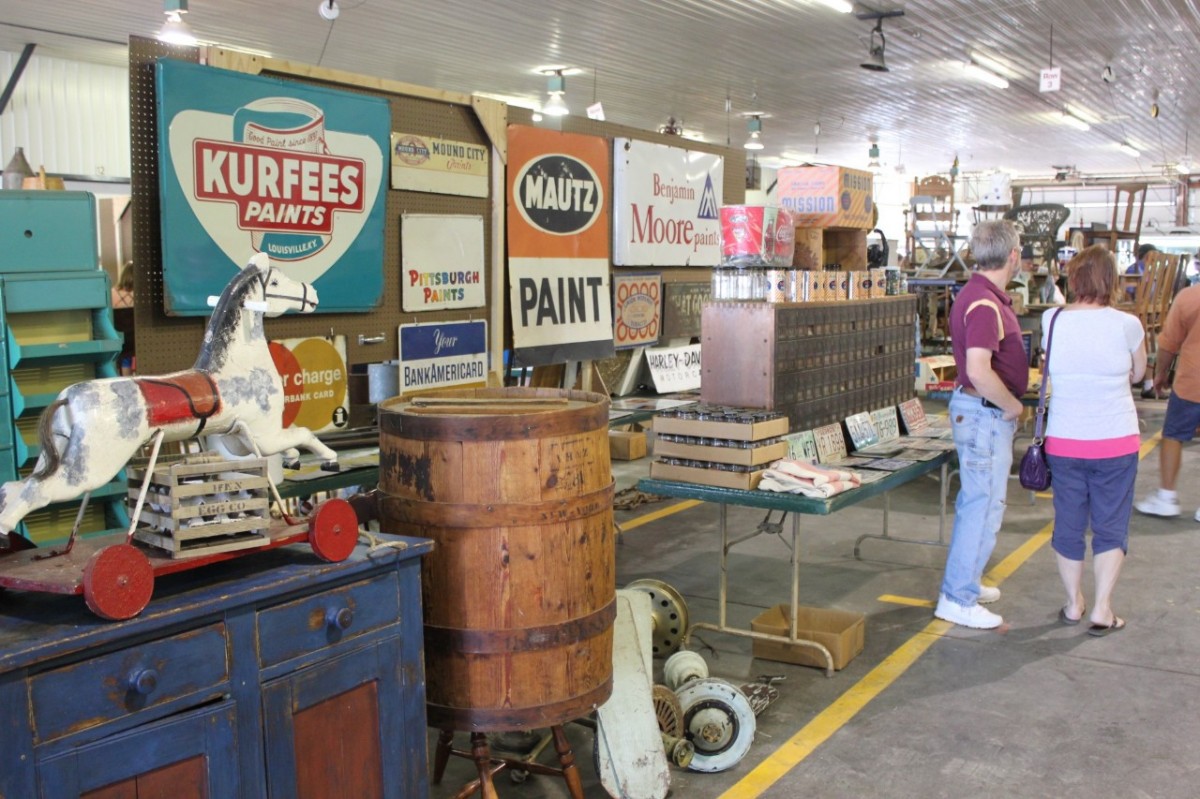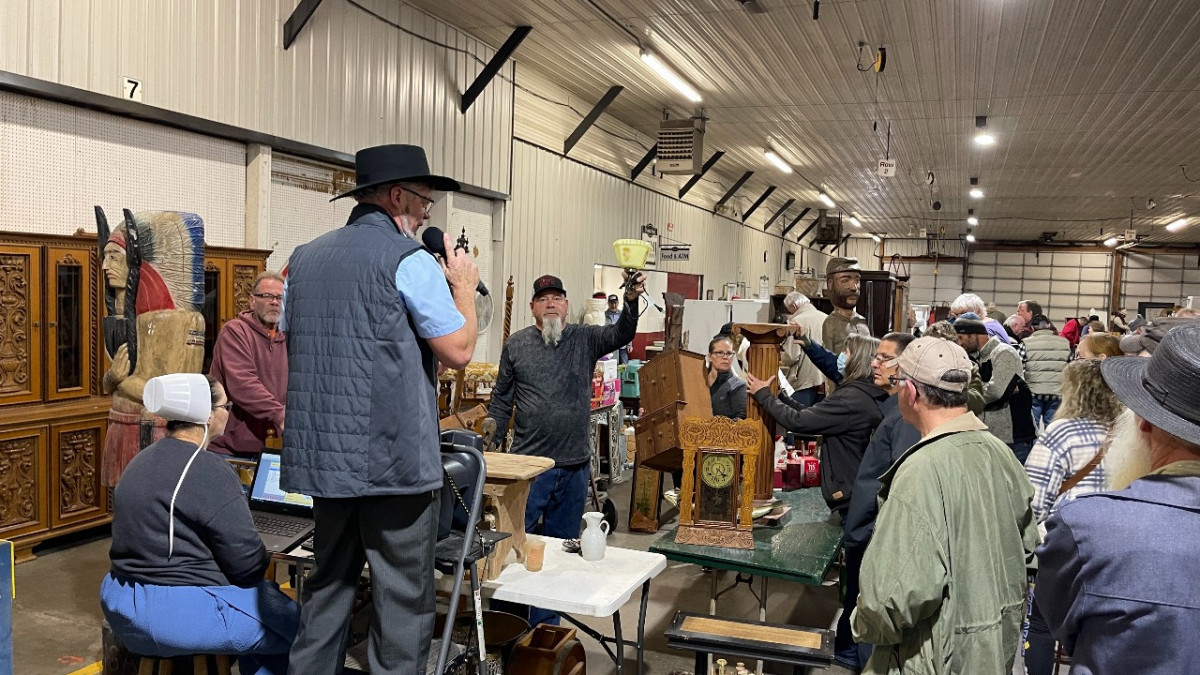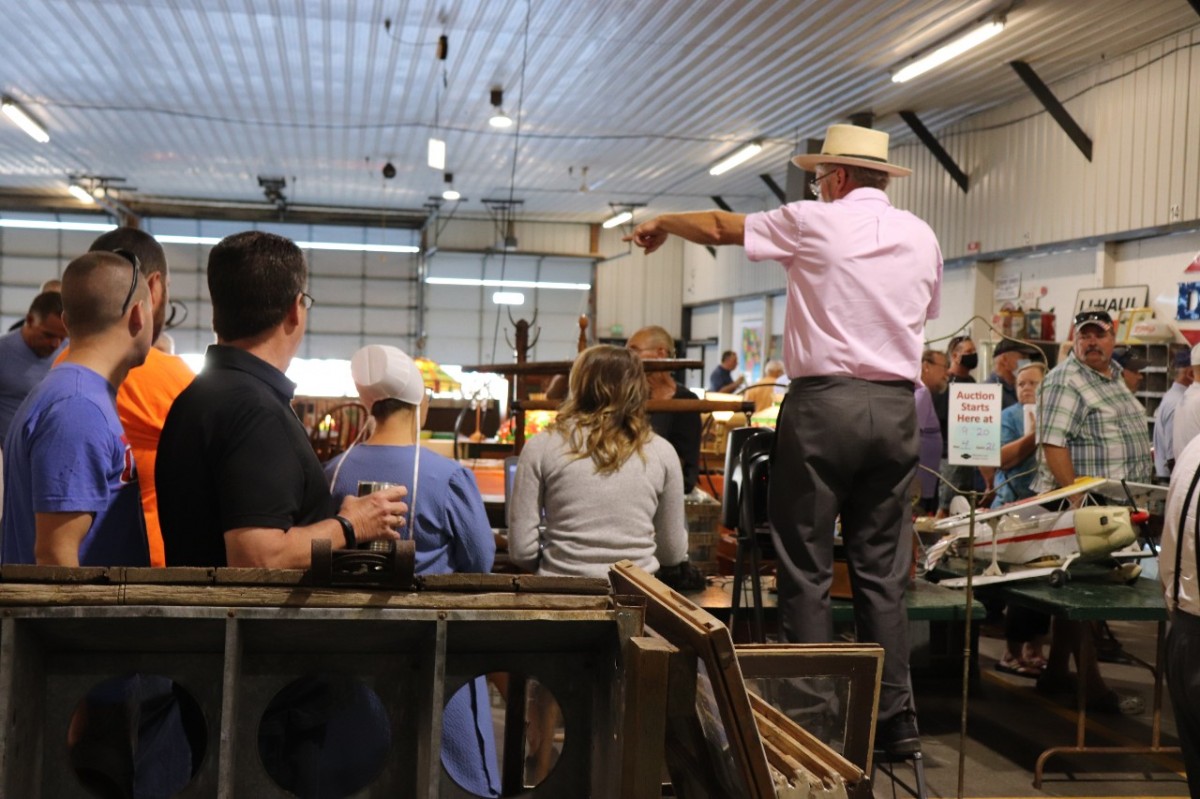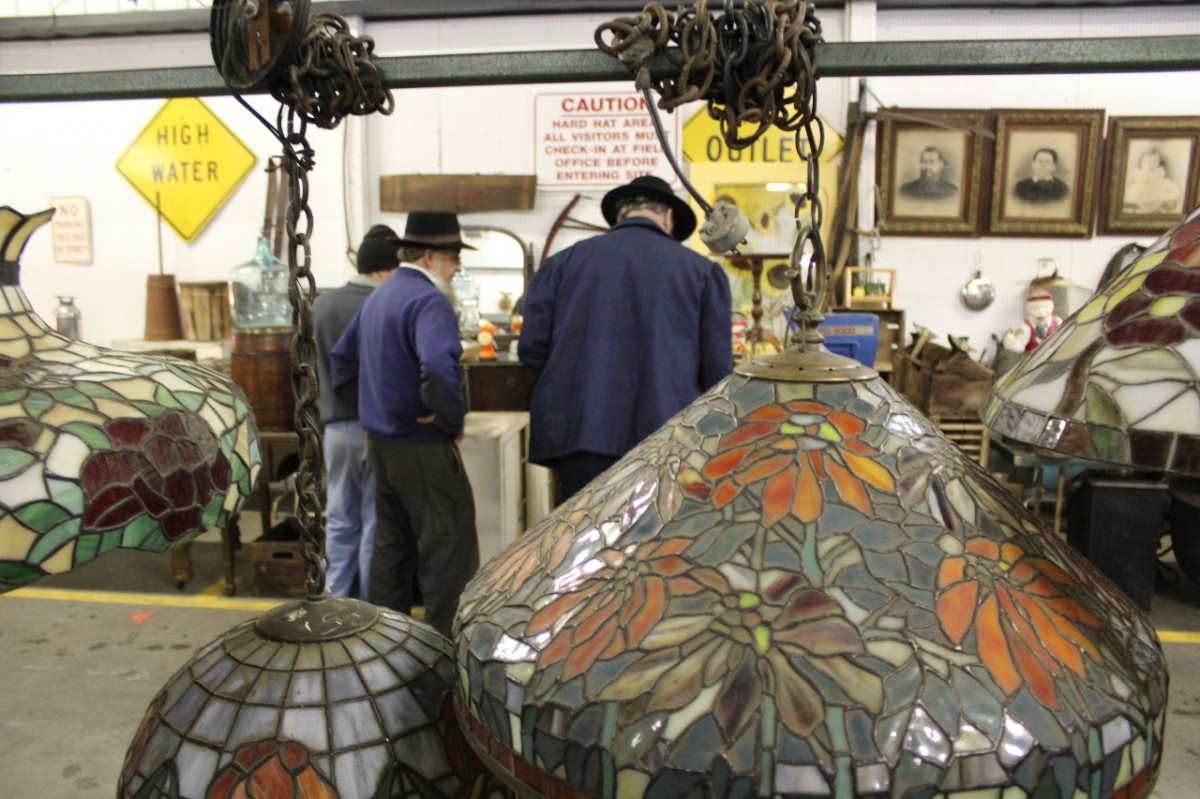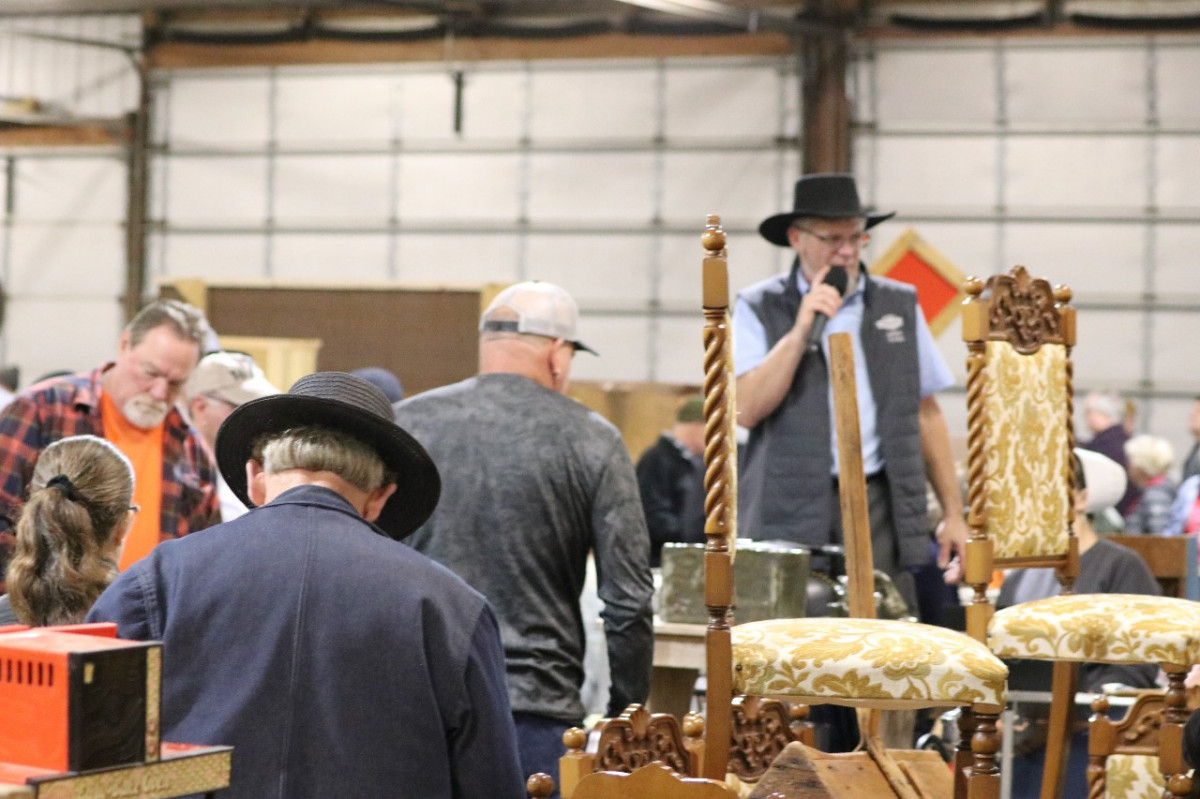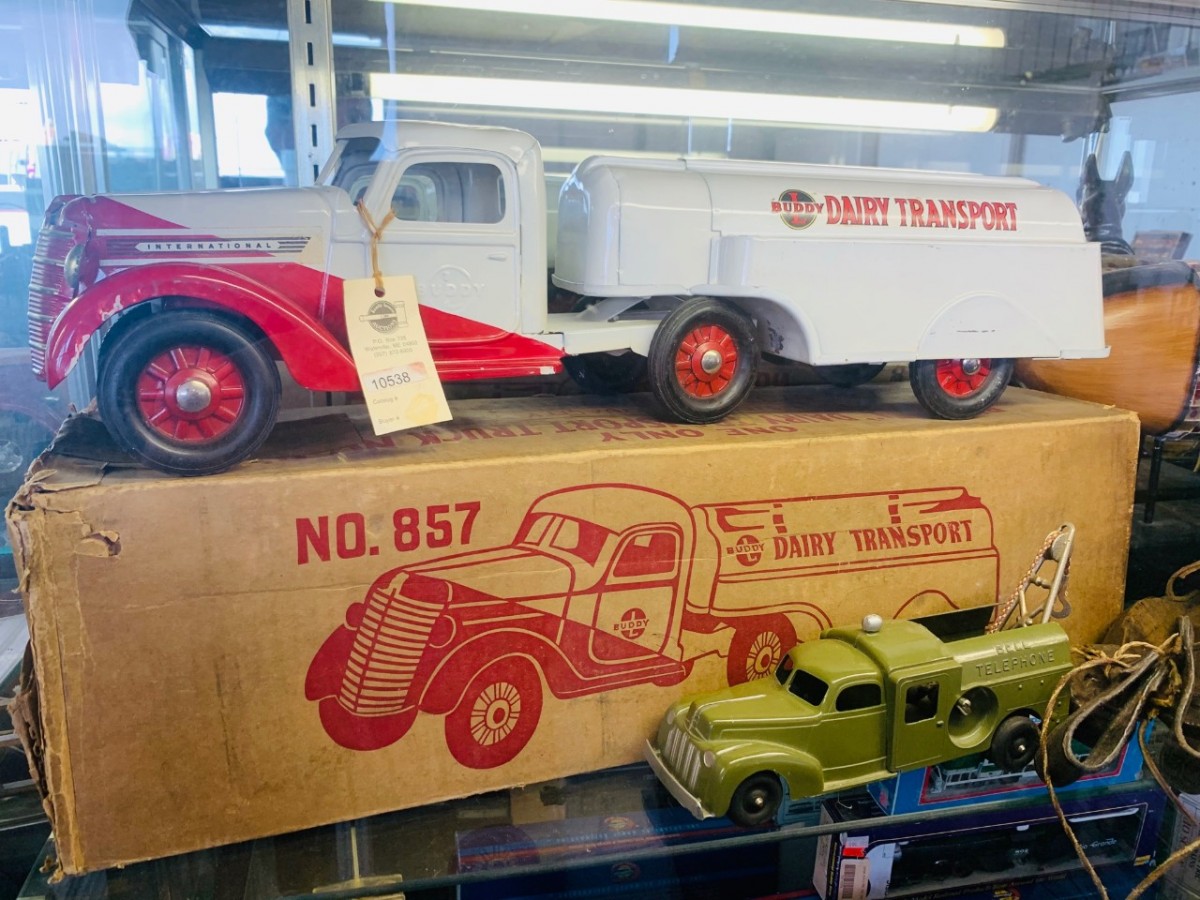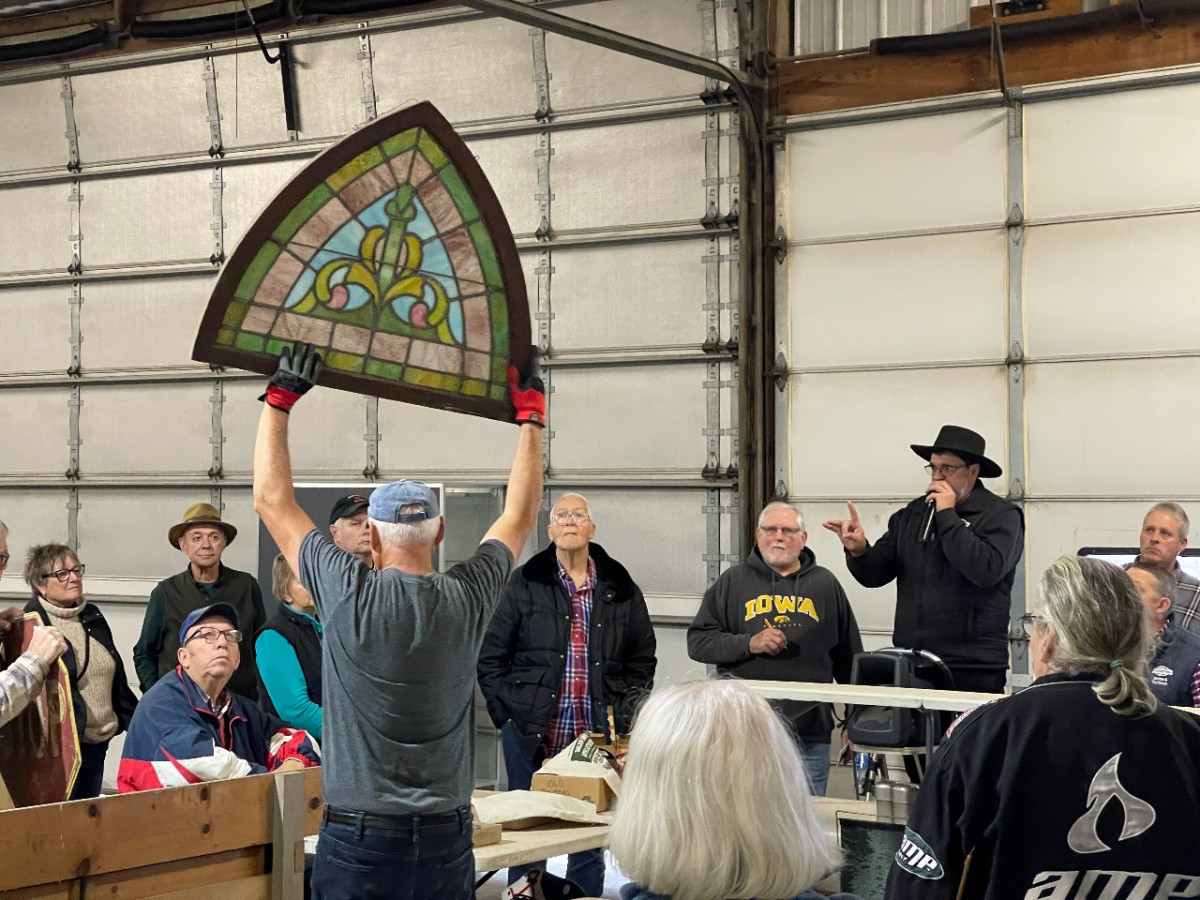The Shipshewana Trading Place Antique & Misc. Auction is a fun way to shop for your friends, family, home or any DIY (Do-It-Yourself) project you have in mind. Selling thousands of lots each Wednesday in Shipshewana, IN you won’t want to miss out on this fun weekly event.
Auction Tip 1: Introduction & History of Shipshewana Auction
The Shipshewana Misc. & Antique Auction is held every Wednesday, year-round. This weekly live antique auction has anywhere from six to nine auctioneers selling every Wednesday. The auction itself started in 1922 as a livestock sale and the Antique & Misc. Auction soon evolved. Our main market thrust is for antiques and collectibles, however, anything and everything sells here.
Auction Tip 2: Arriving at the Auction
We suggest coming fairly early in the day prior to the start of the auction at 9 am. Many of our buyers are arriving by 7:30 am in the morning in order to preview. There is a charge to park on the property in the summer months, but during the winter months (fall, winter & spring) there is no charge to park. You can buy a season pass if you come regularly or a day pass at the gate upon entry. Once parked, enter the auction barn on the west end.
Auction Tip 3: How to Register
To bid, you will need a buyer number, so the first thing you need to do is register in the auction office. We issue buyer cards (valid for the calendar year) and they are just $5 for one and $1 for each additional card. Sometimes buyers will bring three or four people since we have multiple rings going simultaneously.)
Indiana Sales tax is collected on all purchases unless you have a tax number and you will pay a 5% buyer’s premium if you use a credit card or debit card, which is waived with cash or check. Minimum opening bid accepted is $5 and there is a $1 ticket fee per transaction.
View a Printable PDF of Full Buyer Information Here
Auction Tip 4: Previewing Items
You’re walking into a large barn chock full of merchandise with about two to three thousand lots out there. (1 lot = a sale transaction regardless of how many items are in that lot.) Now, you should preview your items, making note of what you want to buy. If the consignor (the one holding up stuff and generally the owner of the merchandise) is in the ring, you can ask them questions ahead of time. With six to nine start positions depending on what time the year you are here, allow plenty of time to preview the items so that there are no surprises later.
Helpful Hint: You can also preview items online to get a general sense of what the barn holds. (Just remember, not all items are pictured and photos aren’t loaded by our team until 5 pm each Tuesday prior to the Wednesday sale.)
Auction Tip 5: Auction Staff
Right in the middle of the auction barn is a bell and at 9 am, when that bell rings, the auction starts and the cry takes up just like on Wall Street. Things go from quiet to loud. You’ll see at each start, an auctioneer, a clerk and somebody representing the merchandise. There’s an auctioneer on a ladder and there’s a clerk either on a stool or standing beside the auctioneer with a laptop that will be recording all the transactions.
In the ring itself, the person holding up the merchandise and picking and choosing which item is next to sell is generally the owner. That is not always the case and sometimes they don’t feel comfortable representing or being in front of a crowd so they’ll hire somebody to do that. The office has a staff of four or five clerks and generally there are a few staff on the floor to handle any auction business that may come up throughout the sale as well.
Auction Tip 6: Understanding the Auctioneer
A lot of auctions you attend only have one auctioneer selling, but in our situation there will be six to nine of them. You’re going to be hopping around from ring to ring and you’re likely thinking how in the world do I understand this guy? To sell an item at auction the auctioneer generally will ask for a certain dollar amount. He or she might think an item is worth $500 so they’ll start the bidding call there and drop until maybe even $50.
With the catch of the first bid, that’s where the bidding starts and now the bidding goes the other way, from $50 to $75, $100 and so on depending on the bid increments which is the discretion of the auctioneer. With the auction operations, we are working for the seller and trying to get the most money we can for the consignor (aka seller). It takes both the seller and the buyer to make this sale happen each week so we do appreciate both sides of the coin.
Auction Tip 7: Learning Terms of Sale Part 1: As Is! Where is! There Is!
In this noisy, loud and exciting environment it’s very important that you pay attention to what the auctioneer is saying about the item prior to the sale of the item. Everything is sold as is, where is, there is! Basically, items are just being picked up off the table and sold for what you see. Buyer’s have the opportunity to inspect the items prior to the auction.
“As is, where is, there is”… unless stated otherwise by the consigner and what that might mean is that the consignor would say that this item is fifty years old and has no cracks in it so you buy it based on those terms and conditions. But when they handed it to you, you suddenly realize that it’s not fifty years old and it’s got a big hairline crack in it. In that situation you would have recourse but that needs to be dealt with immediately and not in ten minutes or an hour.
Auction Tip 8: Learning Terms of Sale Part 2: By the Piece Times the Count
One term of the sale that confuses some people is “by the piece times the count.” When multiple items are being sold, quite often (especially like sets of chairs) they will sell those items by the piece times however many chairs whether there are four chairs or six chairs. Pay attention to those terms. The auctioneer will announce that prior to the sale of the item. They may say we’re selling buy the piece times four and then repeat it three or four times.
Where a lot of people get fooled, is that they weren’t paying attention or they couldn’t hear it because they came running up after the item is actually halfway through the bidding and they just start bidding without knowing the terms and then all of a sudden, they’ve figured out that they spent not fifty dollars but fifty dollars times four. In this case, they spent $200 not $50. In these cases, your best bet is just to get the attention of the auctioneer prior to bidding and ask how these items are being sold? (Is it by the piece or is that for all of them?) We don’t want you to have an unpleasant experience by spending $200 when you only thought you spent $50.
Auction Tip 9: Sold with Reserve
One thing you should know as a bidder is that in the state of Indiana, everything is sold with a reserve bid unless otherwise stated. What that means is that those consigners have the right not to sell you that article for the last bid received at any time prior to the auctioneer saying the word “sold”. You might have the bid of $300 and the seller says I can’t take that, I need $500. They have that right to no-sale the item. In a weekly average sale, this may only happen 5-10 times in the 2,000-3,000 items we sell every week.
Auction Tip 10: Know What You’re Buying
One of our former employees bought a little cast-iron toy crane that they paid seventy or eighty dollars for. They thought it was old and it was their own fault because they didn’t really look it over very carefully. When they handed them the toy at the auction it was a brand-new cast-iron toy and what they did for a long time was to keep that toy on the dash of their truck just to remind themselves that they made a mistake and it cost them a little bit of money. They called that tuition!
You need to know what you’re bidding on and what you’re buying especially when you’re spending your money and we don’t want anybody to be fooled out here on the floor. It’s important to do some studying and reading especially if you’re trying to dabble in antiques. There are plenty of books out there to reference and you can go online and find items on different sites and sources. Just do some studying, and basically experience is your best educator. Know what you’re doing and have knowledge when you enter our auction building.
Auction Tip 11: Have Fun!
We trust these tips have been helpful, especially if you’re a new buyer. Knowing we have multiple rings going at the same time and that there’s a lot of action on the floor helps you prepare in advance of the sale. There are many people out there, a lot of noise and our goal is for you to have an enjoyable experience at the Shipshewana Misc. & Antique Auciton.
Many interesting items have sold over the years here and people have taken those items home to enjoy them for many years. We want you, as a buyer, to have a positive, enjoyable experience buying at our weekly Misc. & Antique Auction in Shipshewana.

